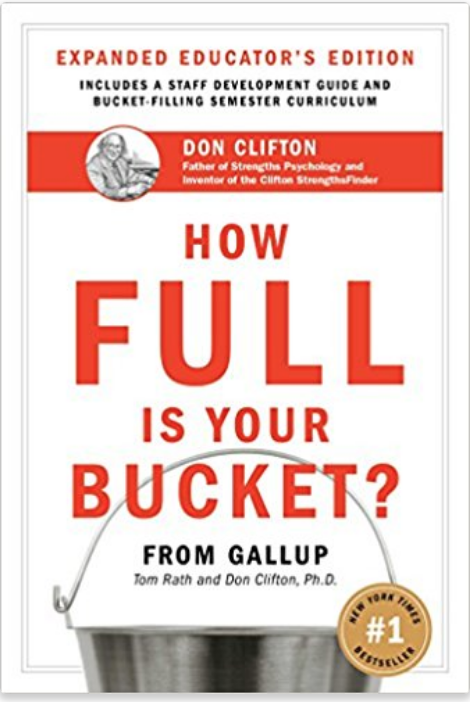Apter, B., Arnold, C., & Swinson, J. (2010). A mass observation study of student and teacher behaviour in British primary classrooms Educational Psychology in Practice, 26(2), 151-171.
Brophy, J. (2006). History of research on classroom management. In C. M. Evertson & C. S. Weinstein (Eds.), Handbook of classroom management: Research, practice, and contemporary issues (pp. 17-43). Mahwah, NJ: Eribaum.
Rath, T., & Clifton, D. O. (2015). How full is your bucket? (Rath & Clifton, 2015, p. 5-31).
 Nobel prize winning scientist, Daniel Kahmeman states that as individuals we experience about 20,000 interactions each day. Daniels calls these interactions moments. These moments are recorded by our brains as experiences. The quality of our day is determined by how our body and brain can categorize our moments- either positive or negative, or just neutral. Neutral moments do not make as great of an impact, nor are remembered.
Nobel prize winning scientist, Daniel Kahmeman states that as individuals we experience about 20,000 interactions each day. Daniels calls these interactions moments. These moments are recorded by our brains as experiences. The quality of our day is determined by how our body and brain can categorize our moments- either positive or negative, or just neutral. Neutral moments do not make as great of an impact, nor are remembered.
Over the last decade Scientists have studied the impact of positive to negative interaction ratios in our work, and personal lives. They can predict success in live with amazing accuracy in many ways- including education, workplace performance, and relationships.
Noted psychologist John Gottman’s research on positive to negative feedback using a ratio of 5:1 He calls this the Magic Ratio. In Donald Clifton’s and Tom Rath’s Book, “How Full Is Your Bucket” – He uses the term Bucket & Dipper.
The Effect size of using positive feedback in your classroom is a 0.75 percent. In-order to make Feedback most effective, remember to provide the following:
- Use timely prompts to our students when they have done something correctly or incorrectly.
- Give students the opportunity to use the feedback to continue their learning process.
- End feedback with the student performing the skill correctly and receiving positive acknowledgement from you-the teacher.
Please view these two video clips from the Teaching Channel on creating a comfortable classroom environment, and how to use some silent attention-getting techniques. Both of these videos cover Standard 1, Positive Learning Environment / Classroom Management. The focus is on positive behavior and using instructional supports in a positive environment.
Creating a “Comfortable” Classroom Environment: https://www.teachingchannel.org/videos/building-a-comfortable-classroom
Get Their Attention Without Saying a Word: https://www.teachingchannel.org/videos/silent-attention-getting-technique
